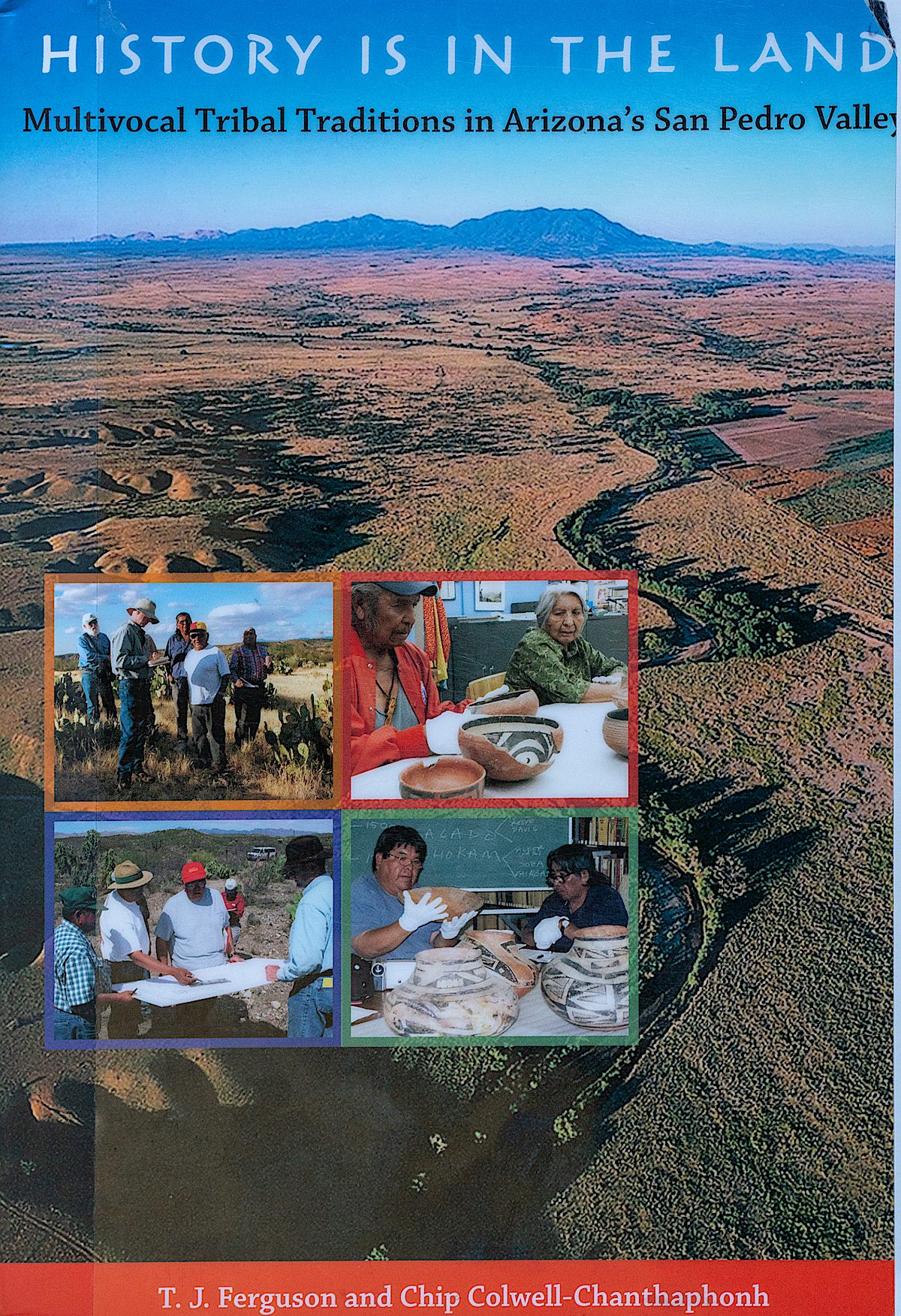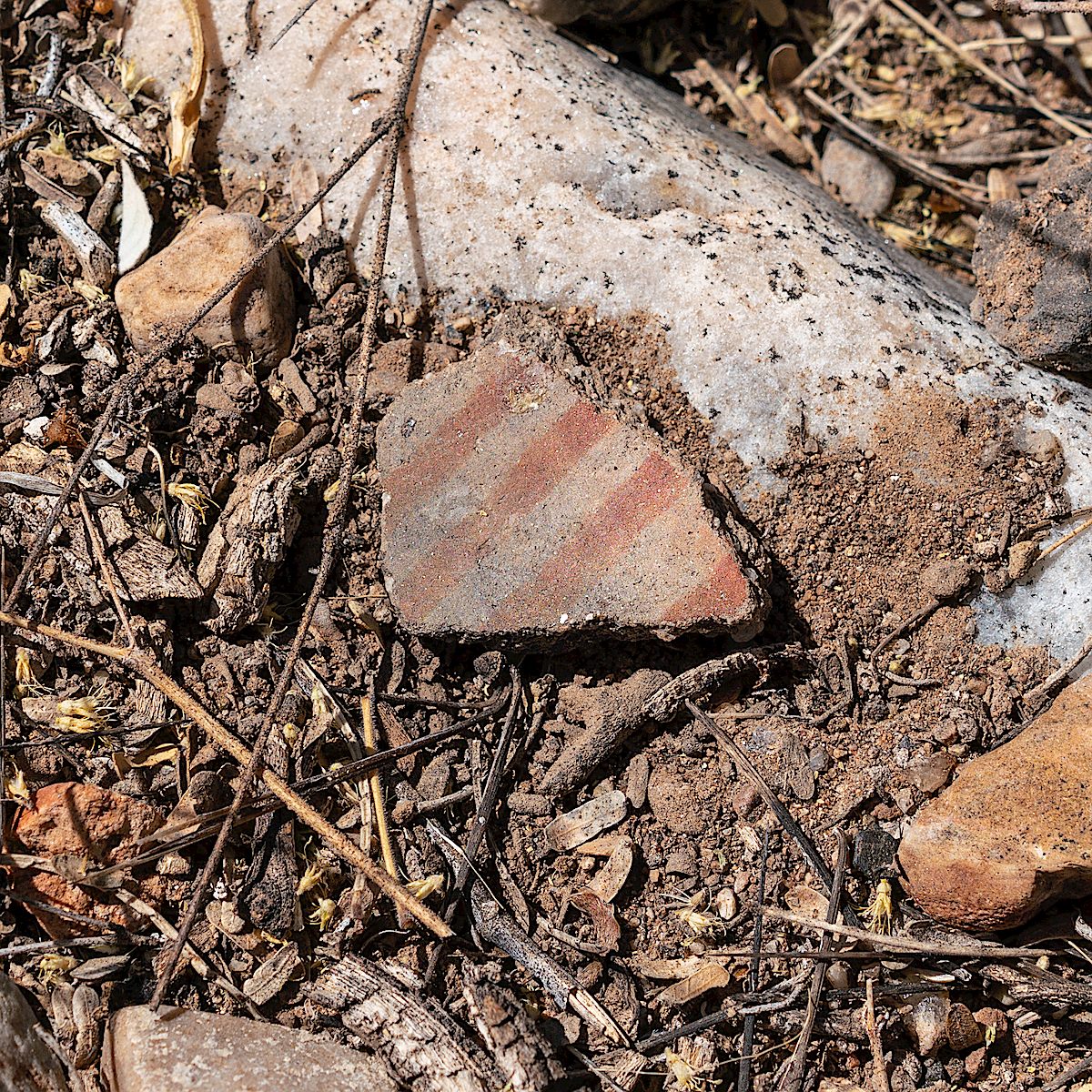
Alder Wash Ruin is a complex, multicomponent site that includes Hohokam pithouses, agricultural features, and a Sobaipuri component. … The different forms of pithouses at Alder Wash Ruin are generally considered to be representative of cultural interaction between the occupants of the San Pedro Valley and areas to the north and east.
Today’s walk thru the Alder Wash Ruin is a different experience than standing at Reeve Ruin several years ago. Of course the sites themselves are different – Alder Wash is a Hohokam site, Reeve Ruin was occupied by Western Pueblo people who migrated into the San Pedro River Valley… But the experience is largely different because over the past few years I have learned more about the history of the San Pedro River and had the chance to visit more archaeological sites in Southern Arizona. Now I sometimes recognize a scatter of sherds on the desert floor, mounds and depressions occasionally make a tiny (very very tiny…) bit of sense, site names like Davis Ranch, Soza Ruin, Second Canyon, Twin Hawks, Bayless Ruin have a certain familiarity. Some of my familiarity comes from reading (and re-reading) History is in the Land: Multivocal Tribal Traditions in Arizona’s San Pedro Valley by T. J. Ferguson and Chip Colwell-Chanthaphonh – a quote from the book explains the project it is based on:
As Bill Doelle and his colleagues continued their research [along the San Pedro River] in the 1990s, analyzing survey data and initiating test excavations at selected sites, they realized they were acquiring substantial scientific data but had little understanding of what these places mean to contemporary Native Americans whose ancestors once occupied the valley. … He realized that archaeology alone could not provide all of the information needed to fully understand the past. This was the beginning of the San Pedro Ethnohistory Project. … The San Pedro Ethnohistory Project was designed as collaborative research with four Indian tribes to redress this situation by visiting archaeological sites, studying museum collections, and interviewing tribal members to collect traditional histories.
Migration is one subject explored in the History is in the Land: Multivocal Tribal Traditions in Arizona’s San Pedro Valley – the Zuni and Hopi participants in the San Pedro Ethnohistory Project recognize their ancestors in the ruins along and artifacts from the San Pedro River. Migration is also explored on a larger scale in Craig Childs’ House of Rain: Tracking a Vanished Civilization Across the American Southwest. House of Rain is an epic travelogue following the migrations of the Ancient Puebloans from Chaco Canyon, across the southwest and south into Mexico. T. J. Ferguson, one of the authors of History is in the Land, is interviewed by Childs in House of Rain –
In an even-tempered voice he told me that it is a mistake to see prehistoric archaeology and Native American history as being separate. “It’s an unbroken chain,” Ferguson explained, his soft, glacial-blue eyes peering into the desert as he spoke. “You can’t look at one without looking at the other. And if you’re following paths of migration, you’ll find them in linguistics and in oral traditions. They are still very much intact.”


















